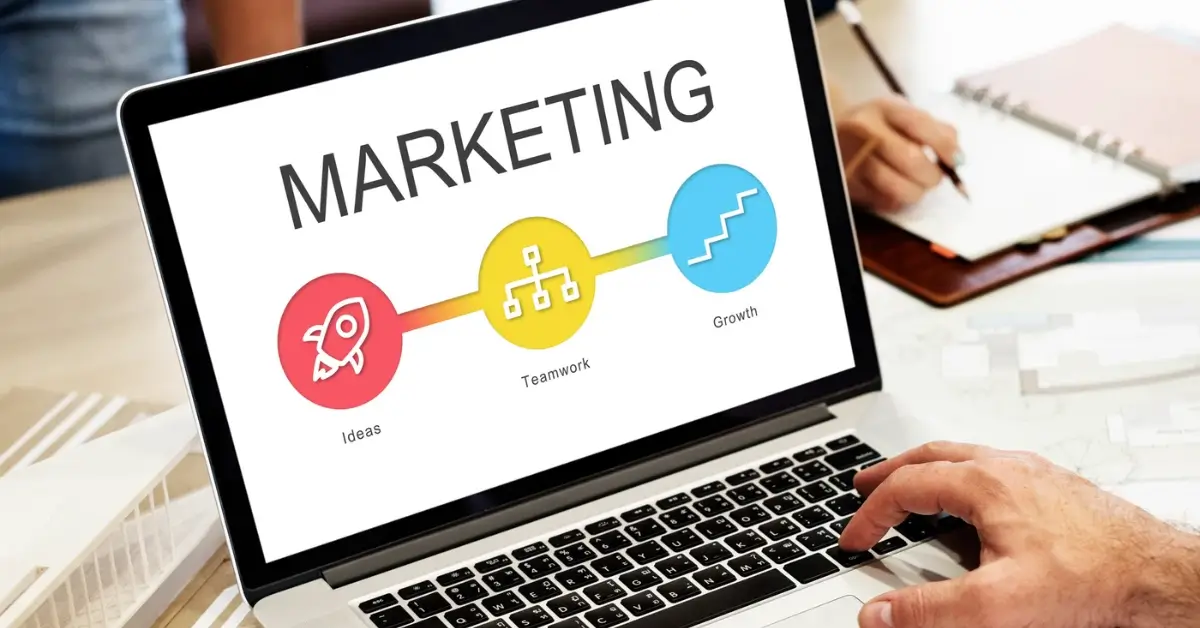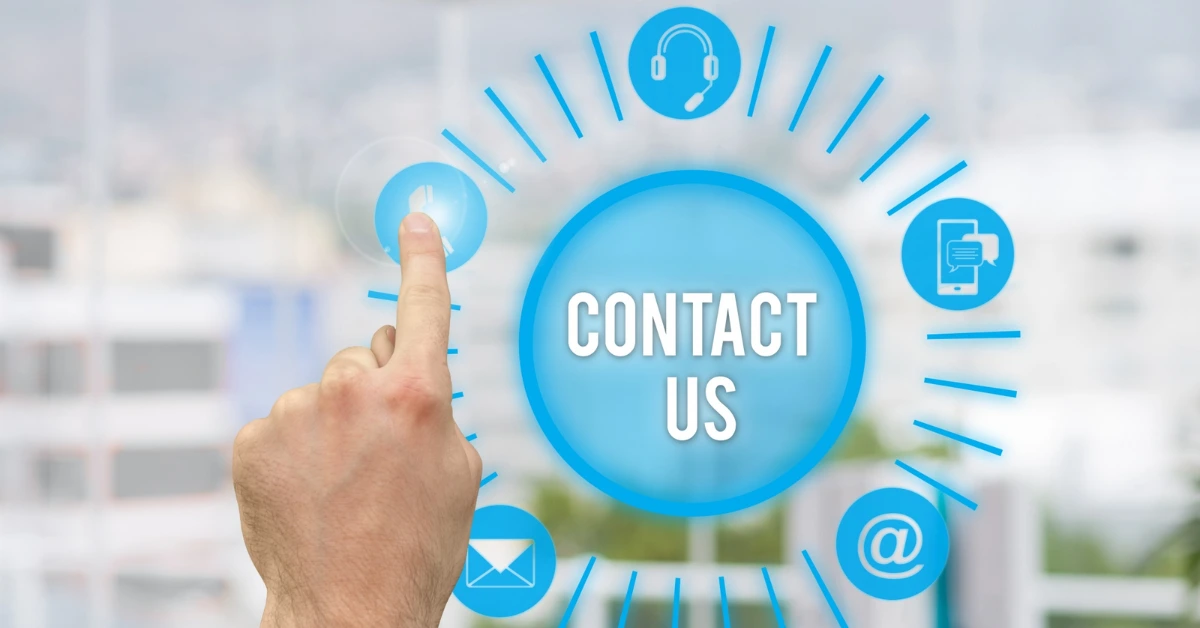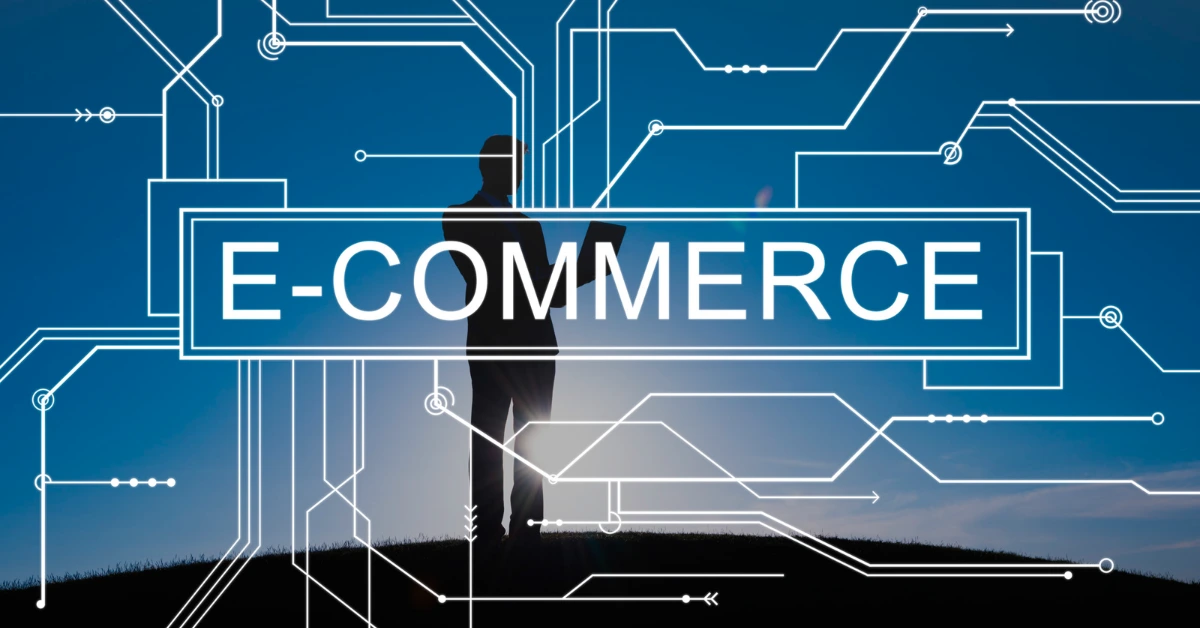A call to action (CTA) is a clear instruction that prompts the audience to do something specific – for example, “Buy Now,” “Sign Up,” or “Download.” In other words, it’s the next step a marketer wants readers to take. CTAs usually appear as clickable elements (buttons or text links) that stand out on a web page, email, ad, or social post. The purpose of a CTA is to guide visitors further along the marketing funnel and toward a conversion event (a sale, signup, download, etc.). An effective Call to Action cuts through decision fatigue by offering a clear next step, reducing confusion and giving the user a straightforward choice. In practice, CTAs can be as simple as a text link or as prominent as a button; they often use imperative verbs like “learn more,” “shop now,” “download,” or “get started” to create immediacy.
Why CTAs Matter in Marketing and SEO

Call to Actions are the engine that turns traffic into conversions. In marketing terms, they are conversion drivers – they literally bridge your SEO and revenue goals. By telling users exactly what to do next, CTAs help move people from awareness to action. For example, a blog post might include a “Subscribe to Newsletter” CTA, a product page might use an “Add to Cart” button, and a landing page might feature “Request a Free Consultation.” In each case, the CTA focuses the user’s attention on one clear objective. This clarity is crucial: Shopify notes that a well-written CTA can “reduce a prospective customer’s decision fatigue by giving them a clear next step”.
From an SEO perspective, effective CTAs can also improve key metrics that search engines monitor. A compelling Call to Action encourages users to click deeper into a site, which can increase time-on-page and click-through rate (CTR) from search results. In fact, CTAs that align with user intent can directly support SEO goals: as SalesHive puts it, CTAs can “bridge your SEO efforts and revenue goals” by guiding prospects through the funnel. In practical terms, a strong CTA keeps users engaged on your content (reducing bounce rate) and drives them towards conversion actions (signups, purchases, etc.), which are ultimately the outcomes that make SEO worthwhile.
Key benefits of good CTAs include: guiding the user to the next step, capturing user data (like emails), and boosting engagement. For instance, Neil Patel’s blog emphasizes that CTAs do more than increase sales – they “capture data” (e.g. newsletter signups) and “direct your audience” to take action. Quattr similarly notes that CTAs give users easy access to a site’s critical content and improve overall user experience. In short, a clear CTA can significantly improve conversion rates and make your SEO traffic work harder for your business.
Types of CTAs and Where They Appear

CTAs come in many forms and serve different purposes depending on context. Broadly, CTAs can be hard/direct or soft. A hard Call to Action uses urgent, action-oriented language (like “Buy Now” or “Start Free Trial”) and is typically used when the user is ready to convert. A soft CTA is gentler (like “Learn More” or “Read More”) and is used higher in the funnel when users are still exploring. Sales funnels often use a mix: for example, after an initial soft CTA to download an ebook, a later hard CTA might invite the lead to sign up for a paid plan.
CTAs can also encourage a variety of actions beyond just buying. They might invite visitors to subscribe to a newsletter, share content on social media, fill out a form, review a product, or contact sales. For example, a blog post CTA might say “Subscribe Now” to grow an email list, while a content marketing CTA might be “Read Our Case Study” to engage readers further. The key is to match the CTA’s action to your marketing goal.
In terms of placement and format, CTAs aren’t limited to buttons on web pages. They can appear as text links in a paragraph, banner images, sidebar widgets, pop-up overlays, or even QR codes and phone prompts. Quattr’s guide points out that CTAs can be “banners, pop-ups, sidebars, hyperlink text, or images” – in short, any element that clearly stands out and leads the user on. While buttons are the most common (because they’re visually prominent and clickable), creative CTAs can also include bold text links or in-line prompts. The one requirement is that a Call to Action should be obvious and immediately actionable.
Best Practices for Effective CTAs
Crafting a high-performing CTA involves combining clear copy, compelling design, and strategic placement. Below are key practices to follow:
- Use strong, action-oriented language: Powerful CTAs start with commanding verbs that spur action. For example, instead of a vague “Learn More,” use “Download Your Free Template” or “Book a Strategy Session”. SalesHive suggests using specific action verbs and personalization – e.g. “Start My Free Trial” – which can boost click-through rates dramatically. Neil Patel likewise recommends verbs like buy, save, subscribe, download, get, claim, reserve, or discover to create urgency and momentum. In bullet form: Buy, Save, Subscribe, Download, Get, Claim, Reserve, Discover are all popular CTA verbs that convey immediate value.
- Focus on benefits and value: Great Call to Actions make it obvious what the user gains. Instead of “Submit,” a CTA might say “Save $10 Today” or “Get Your Free Copy.” This benefit-oriented phrasing appeals to user interests and pain points. For example, Evernote’s homepage CTA “Get Evernote free” is paired with the headline “Tame your work, organize your life,” highlighting the value to the user. By framing the offer in terms of solving a problem or improving the user’s life, you give people a clear reason to click.
- Be concise and clea:. Keep CTA text short and to the point. Long phrases can dilute the message. Link-Assistant’s SEO guide advises using brief, imperative phrases (“Buy now,” “Read here”) instead of lengthy sentences. Shopify likewise notes that an effective CTA “uses only the necessary words to communicate a clear prompt,” avoiding any extra fluff. Ideally, a CTA button or link should be no more than a few words long, easily scannable, and immediately understandable.
- Create a sense of urgency: Phrases that imply a deadline or scarcity can prompt faster action. Words like “Now,” “Today,” “Limited Time Offer,” or “Last Chance” can evoke FOMO (fear of missing out) without being pushy. For instance, Shopify suggests using time-sensitive terms to make readers act quickly (e.g. “Limited time offer”). Neil Patel demonstrates this with examples like Black-Friday CTAs that highlight an impending deadline. The key is to be truthful – only use urgency for real limited-time deals, or you risk eroding trust.
- Personalize phrasing when possible: First-person language can boost engagement. For example, changing “Start your free trial” to “Start my free trial” makes the CTA more personal. SalesHive cites a case where first-person CTAs increased clicks by up to 90%. The idea is to make the CTA feel like the user’s action, not just a generic corporate command. (Likewise, tailoring CTAs by user segment – e.g. showing different CTAs to new vs. returning visitors – can improve relevance.)
- Design CTAs for visibility; A CTA must stand out visually. Use a high-contrast color for the button or text so it pops against the background. Bold fonts, white space, arrows, or icons can also draw the eye. According to SalesHive, a red button on a white background can convert 34% more than neutral colors. Make sure the CTA is large enough on mobile (thumb-friendly) and follows accessibility guidelines (e.g. include descriptive alt text if it’s an image). In short, the design should make it impossible to miss the CTA.
- Place CTAs strategically: Location on the page greatly affects visibility. Put your primary CTA “above the fold” (visible without scrolling) when possible. For example, a “Request a Consultation” button at the top of a B2B site header. Supplement this with in-content CTAs after key points or statistics; SalesHive suggests adding CTAs after insights in a blog post to reinforce action (e.g., after citing “74% of B2B buyers research online…” a CTA like “Download our B2B research guide”). If appropriate, consider exit-intent popups or footer CTAs for users who scroll through content but haven’t converted. Always ensure there’s a logical path: the CTA should follow naturally from the surrounding content (what users just read should make the CTA a natural next step).
- Align CTAs with your SEO keywords and content: For SEO-driven content, make sure your CTA language reinforces the page’s main topic. SalesHive recommends using keyword-rich anchor text in CTAs. For instance, if your article targets “B2B SEO strategies,” your CTA might be “Download our B2B SEO checklist”. This not only helps with relevancy but also guides readers using the same terms they searched for. Similarly, use long-tail keywords in CTA text when targeting niche queries. For example, instead of a generic “Compare CRMs,” a more specific CTA could be “Compare Top CRM Tools for SaaS”. While our sources don’t give a step-by-step on CTA keyword research, the best practice is clear: match your CTAs to user intent and keyword focus on the page.
- Test and refine through data. No CTA is perfect on the first try. Continuously A/B test different CTA versions to see what resonates. SalesHive recommends testing variations in wording (e.g. “Get Started” vs. “See Pricing”), placement (top vs. bottom of the page), and colors. Shopify likewise stresses A/B testing: comparing a button versus hyperlink, different color schemes, or changing just one word. Track metrics like click-through rate and conversion rate for each variant. Over time, you’ll learn what language and design move the needle for your audience. (In fact, HubSpot found that simply using anchor-text CTAs increased conversions by over 100% compared to image buttons!) The bottom line: measure CTA performance and iterate using real data.
Real-World CTA Examples
CTAs take many shapes in practice. Here are some common real-world examples to illustrate what high-performing CTAs look like:
- Standard e-commerce CTAs: Phrases like “Shop now,” “Add to cart,” or “View deals” are ubiquitous on retail sites. For example, Shopify’s blog lists “Shop now” and “Add to cart” as classic prompts that drive purchases. These CTAs appear on product pages and ads to directly boost sales.
- Lead-generation CTAs: B2B and SaaS sites often use phrases like “Start my free trial,” “Request a demo,” or “Download [Free Report]”. Neil Patel himself highlights the “Start My Free Trial” button on his Ubersuggest pricing page as a prime example. In that vein, many software companies place a bold “Try it free” or “Sign up for free” button on their homepage. For instance, Matomo’s analytics site uses a green “Try it free with email” CTA that explicitly notes “no credit card needed”:
Many SaaS companies offer frictionless trials. Here, Matomo’s homepage features a clear free-trial CTA “Try it free with email,” emphasizing that users can start without a credit card.
- Benefit-focused CTAs: Instead of generic text, some CTAs incorporate benefits or solutions. Evernote’s landing page (shown below) uses the headline “Tame your work, organize your life” and a button “Get Evernote free.” This pairing signals the core benefit (organized life) while the CTA is straightforward:
Evernote’s CTA example: it pairs a benefit-driven headline with a simple “Get Evernote free” button to draw users in. The focus is on the value to the user (an organized life) rather than just the action.
- Timed or exclusive offers: Phrases like “Limited-time discount”, “Join 1,000+ members”, or “Early bird special” leverage social proof and urgency. For example, Shopify’s “Claim offer” CTA is geared toward flash sales and uses urgency to boost conversions. Many retail emails and ads will also say “Get 50% off now” to trigger immediate action.
- Content subscription CTAs: Media sites and blogs often use “Subscribe,” “Subscribe to our newsletter,” or “Get updates”. If you’re running a content site, a common CTA in the sidebar or header might simply be “Subscribe for free insights” with an email field.
- Button versus text: Note that some CTAs are just hyperlinked text within content (e.g., “Download our free guide” embedded in an article). HubSpot research (via Quattr) found that anchor-text CTAs in blog posts were extremely effective, accounting for over 90% of leads in one study. This shows even a simple bold link can be a high-performing CTA if placed well.
In all cases, CTAs should be highly visible and contextually relevant. For example, placing a “Learn more” CTA under a product feature blurb, or a “Download guide” link below a research statistic, encourages a seamless next step. The examples above illustrate how simple, benefit-oriented, or urgency-laden wording can turn ordinary links and buttons into conversion engines.
CTA Optimization: Combining SEO and User Focus
For an audience focused on SEO and content strategy, it’s important to think of CTAs not just as marketing copy, but also as part of your keyword and page strategy. Here are some SEO-specific tips for researching and optimizing CTAs:

- Align CTAs with keywords: SalesHive advises that CTAs should support the primary keywords and topic of the page. This means using anchor text or button text that naturally includes terms your audience is searching for. For instance, if you’re targeting “B2B SEO tips,” your Call to Action could be “Download our B2B SEO checklist” or “Claim your free SEO audit”. This way, the CTA feels like an organic part of the content and resonates with search intent.
- Use keyword research insights: While no source offers a formula specifically for CTA keyword research, you can leverage your normal keyword research process. Identify high-intent keywords or phrases related to your offer and incorporate them. For example, if a keyword tool shows “free marketing ebook” is popular, you might create a CTA like “Get the Free Marketing Ebook”. Tracking which keywords bring users to the page (via Google Search Console or analytics) can also guide CTA wording. The general idea is: the language of your CTA should match the language of your target audience.
- Optimize anchor text and links: Always use text-based CTAs (not images) when possible, so search engines can crawl the content. SalesHive emphasizes using keyword-rich anchor text in your Call to Action links. For example, instead of a generic button link, use a line like “Download our B2B SEO Guide” as the clickable text. This helps Google understand the context and can slightly boost the relevance of the linked page for those terms.
- Consider the page theme: Place CTAs on pages where they make thematic sense. An SEO blog post about “keyword strategy” might naturally include a CTA like “Try our keyword planner”. This on-topic relevance improves both conversion and SEO coherency.
- Test CTA wording via A/B testing: Just as you test page titles and meta descriptions, continuously experiment with CTA phrasing. Use A/B tests to compare different keywords, button text, or even first-person vs. second-person CTA copy. Track which variation leads to better engagement or lower bounce, and use that data to refine.
In summary, optimizing CTAs for SEO means making them an integral, keyword-aligned part of your content. Although specific “keyword research” for CTAs isn’t covered in our sources, the consensus is clear: use analytics and research like you would for any copy. Align CTA language with the search terms and intent of your users, and incorporate those keywords naturally into your calls to action.
Measuring and Refining CTAs
Every Call to Action should be data-driven. Common metrics to track include click-through rate (CTR) on the CTA link/button, and ultimate conversion rate for the action (newsletter signups, form completions, purchases, etc.). You can use Google Analytics event tracking, heatmap tools (e.g. Crazy Egg) or platform analytics to see how users interact with CTAs. Heatmaps are especially useful to determine if CTAs are placed where users naturally click or if they’re being missed.
Once you have data, compare A/B test results (as mentioned above) and keep iterating. Shopify advises testing one element at a time – such as changing the button color, then testing a different verb – to isolate what works. Over time, aim for small lifts in CTR or conversions by tweaking phrasing (“Get started” vs. “Try it free”), placement (above vs. below the fold), and design (different contrasting colors). By treating Call to Actions like an ongoing optimization project – much like headlines or meta descriptions – you can steadily improve their performance.









Share